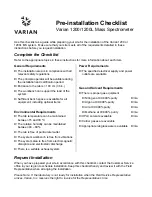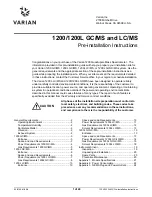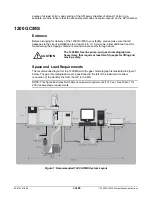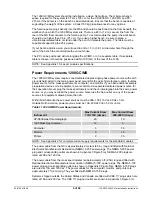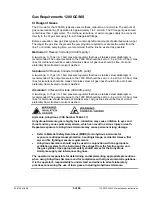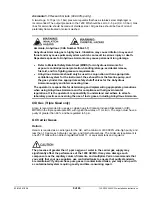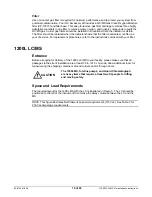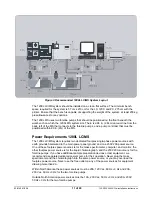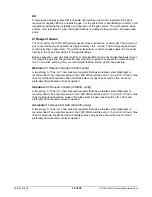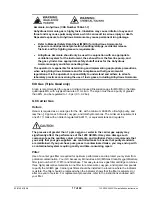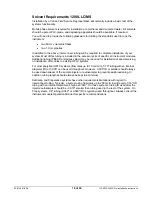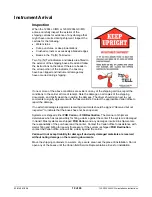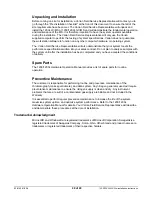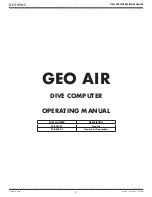
Gas Requirements 1200 GC/MS
CI Reagent Gases
The CI mode for the 1200 MS typically uses methane, isobutane, or ammonia. The amount of
gas consumed during CI operation is approximately 1 to 2 mL/min. The CI reagent gas should
contain less than 1 ppm water. The methane, isobutane, or ammonia gas supply line connects
directly to the CI gas inlet using 1/8-inch Swagelok® fittings.
Before evacuation, new gas lines typically contain significant amounts of adsorbed water vapor.
The longer the gas line, the greater the pumping time required to evacuate the water from the
line. To minimize pumping time, we recommend that the line be as short as possible.
Methane 5.0 Research Grade (99.999% purity)
A two-stage, 0
−
15 psi (0
−
1 bar) pressure regulator that has a stainless steel diaphragm is
recommended. The output pressure to the 1200 MS should be set to 3
−
5 psi (0.2
−
0.3 bar). Gas
lines for methane should be made of stainless steel. All gas lines should be free of oil and
preferably flame treated or solvent washed.
Isobutane 5.0 Research Grade (99.999% purity)
A two-stage, 0
−
15 psi (0
−
1 bar) pressure regulator that has a stainless steel diaphragm is
recommended. The output pressure to the 1200 MS should be set to 3
−
5 psi (0.2
−
0.3 bar). Gas
lines for isobutane should be made of stainless steel. All gas lines should be free of oil and
preferably flame treated or solvent washed.
Ammonia 5.0 Research Grade (99.999% purity)
A two-stage, 0
−
15 psi (0
−
1 bar) pressure regulator that has a stainless steel diaphragm is
recommended. The output pressure to the 1200 MS should be set to 3
−
5 psi (0.2
−
0.3 bar). Gas
lines for ammonia should be made of stainless steel. All gas lines should be free of oil and
preferably flame treated or solvent washed.
Ammonia, Anhydrous (CAS Number 7664-41-7)
Anhydrous Ammonia gas is highly toxic. Inhalation may cause irritation to eyes and
throat and may cause pulmonary edema, which can result in serious injury or death.
Repeated exposure to Anhydrous Ammonia may cause permanent lung damage.
•
Refer to Material Safety Data Sheet (MSDS) for Anhydrous Ammonia for
exposure control/personal protection, handling/storage, accidental release, first
aid, and fire fighting measure requirements.
•
Anhydrous Ammonia should only be used in conjunction with an appropriate
ventilation system for the instrument, the exhaust from the foreline pump, and
the gas cylinder. Use appropriate safety shutoff valves for the Anhydrous
Ammonia supply and interconnecting lines.
The operator is responsible for determining and implementing appropriate precautions
when using Anhydrous Ammonia and for compliance with all governmental regulations.
It is the operator's responsibility to understand and adhere to all safe laboratory
practices concerning the use of toxic gases, including Anhydrous Ammonia.
03-914961-00:6
5
of 24
1200/1200L MS Pre-installation Instructions

